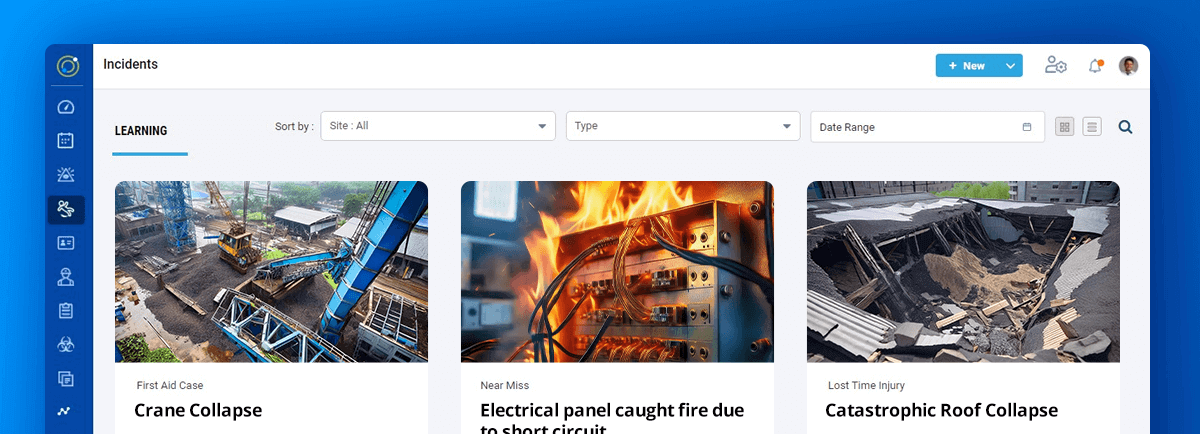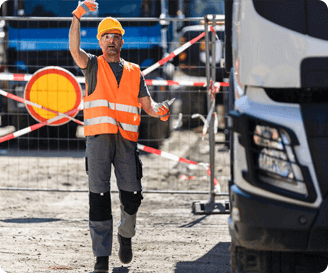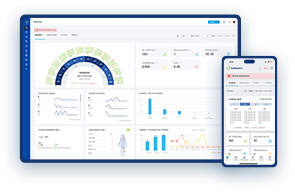
How a “Lessons Learned” Feature Transforms Workplace Safety
In any workplace, incidents and near-misses happen. What sets successful organizations apart is their ability to learn from these experiences.
In this blog post, we will break down why a “Lessons Learned” feature is a game-changer for preventing future issues and improving overall safety management.
Promotes Continuous Improvement
Mistakes happen. But the key is not to let them happen twice. A “Lessons Learned” feature allows you to record what went wrong and what was done to fix it. This means every incident becomes an opportunity to make your workplace safer.
Over time, this feature helps foster a culture of continuous improvement. Employees know that their feedback and observations matter, and management has a reliable system for capturing those insights. This leads to constant enhancements in processes and safety measures.
Prevents Similar Incidents from Happening Again

Think of it like this: a near-miss is a free lesson. By documenting what happened, you can spot patterns and take action before a similar incident occurs. A “Lessons Learned” feature acts as a safety net, catching potential dangers and stopping them from happening again.
Imagine your team facing the same issue multiple times because past incidents were never properly documented. A comprehensive system helps you avoid that. It’s like having a map that shows you where the roadblocks are—so you can avoid them next time.
Informed Decision-Making
When incidents are properly documented, decision-makers have real data to rely on. Instead of guessing or relying on assumptions, there are clear records showing what went wrong, why it happened, and what worked to fix it.
This data-driven approach helps leaders make smarter decisions, allocate resources wisely, and implement solutions that work. Over time, this also makes safety planning more strategic and less reactive.
Boosts Accountability and Transparency
A structured system for capturing lessons learned keeps everyone accountable. When it’s clear who was involved, what actions were taken, and how things were resolved, there’s no room for finger-pointing or confusion.
Transparency becomes even more important when managing high-risk tasks or complying with regulations. A well-organized lessons learned feature helps teams track progress, ensuring that corrective actions are implemented and followed through.
Builds a Knowledge Bank for Future Teams

Imagine onboarding a new team member. Instead of starting from scratch, they have access to a goldmine of information from past incidents. They can see what’s been learned, how issues were solved, and how they can avoid making the same mistakes.
This knowledge bank becomes a valuable resource, not only for new employees but for your entire organization. As more incidents are documented, you build a library of real-world scenarios that can be used for training, decision-making, and policy improvements.
Saves Time and Resources
When you’ve already learned from the past, you don’t have to reinvent the wheel. Having documented corrective and preventive actions means teams can respond faster and more confidently to future incidents.
This not only saves time but also reduces the cost of lengthy investigations. Teams don’t need to rework solutions—they can refer to what’s already been done and apply those lessons effectively.
How Technology Makes it Easier

In the past, lessons learned were often captured in paper reports or spreadsheets, making them hard to access and manage. Today, technology has transformed this process, making it more streamlined and efficient.
A good “Lessons Learned” feature uses automation to capture insights, generate helpful data points, and provide predictive analytics. This makes it easier for safety teams to spot trends, anticipate potential risks, and take preventive actions faster than ever before.
Safetymint’s Approach to Lessons Learned
At Safetymint, we’ve taken the “Lessons Learned” process to the next level. Our feature, part of the Incident and Observation Management module, helps organizations not only document incidents but also create a valuable knowledge repository.
Here’s how Safetymint’s Lessons Learned feature stands out:
1. Automated and Manual Reporting: Users can automate parts of the process—like data input or incident patterns—while still manually adding critical insights. This combination ensures accuracy without losing the human element.
2. Comprehensive Insights: Safetymint doesn’t just stop at documenting what happened. The platform also provides insights like how long it took to respond, how quickly teams were formed, and whether similar incidents occurred in the past. For example, users can see if the same type of incident has happened before and how long it took for it to be fully addressed.
3. Corrective and Preventive Actions: The feature enables users to document not only what went wrong but also what actions were taken to prevent recurrence. This creates a proactive safety culture where lessons are actively applied to stop future incidents.
4. Built-in Rating and Investigation Timelines: Safetymint helps you track the timeline from incident occurrence to resolution. You’ll know when a team was formed, when the investigation report was submitted, and how quickly the incident was closed—helping you measure efficiency and improve response times.
5. Data-Driven Decision Making: By analyzing the lessons learned, Safetymint offers insights that allow teams to predict and prevent future risks. It gives you the data you need to make smarter safety decisions, ensuring that past incidents become a valuable asset for future planning.
Safetymint turns every incident into an opportunity for growth, helping organizations build safer, more informed workplaces.
To experience the feature on Safetymint, take a free trial or request for a demo.
Ben Johnson is a dedicated Customer Success Executive at Safetymint. With a strong commitment to excellence, Ben works closely with customers to ensure they fully leverage the capabilities of Safetymint to its fullest potential, aiming to significantly reduce or mitigate safety risks and incidents.




